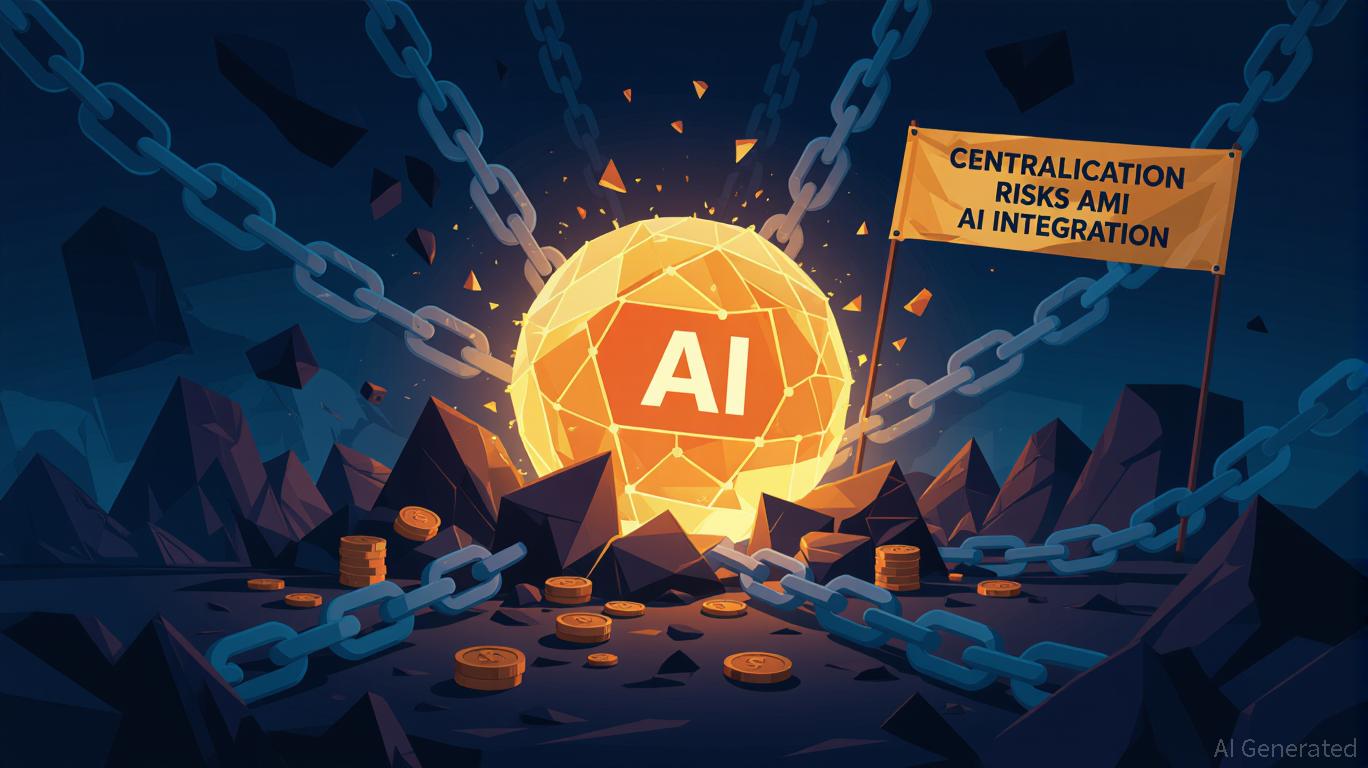Infrastructure-Led Renewal: Harnessing Sustainable Value in Redeveloped Industrial Properties
- Post-industrial towns in the U.S. and Europe are revitalizing through infrastructure-driven real estate redevelopment, transforming abandoned sites into tech hubs and mixed-use spaces. - Strategic projects like Pennsylvania’s tech hubs and Poland’s Zabrze 2030 plan demonstrate how industrial tourism and innovation attract talent, boosting local economies and property values. - U.S. infrastructure investments have driven $13.1T in real estate value growth since 2018, with 7.3% annual job growth in infrast
Post-Industrial Regions: The New Frontier for Investment and Innovation
Once seen as remnants of a bygone era, post-industrial towns across America and Europe are now emerging as dynamic centers for economic renewal. From Pennsylvania’s former coal heartlands to Poland’s historic steel-producing cities, these areas are undergoing dramatic transformations. By focusing on the redevelopment of industrial land and real estate, these regions are not only revitalizing their economies but also setting the stage for future growth. For investors, this shift represents an opportunity to benefit from major changes in global commerce, urban design, and labor markets.
Success Stories: How Cities Are Reinventing Themselves
Consider the example of Northeastern Pennsylvania, where disused industrial properties have been reimagined as tourist destinations and technology centers. Old manufacturing buildings have found new life as mixed-use developments, blending preservation with economic revitalization. In Poland’s Upper Silesia, the city of Zabrze has shifted away from its coal-based past to become a hub for healthcare, research, and cultural activity. The city’s forward-looking 2030 development plan leverages innovation and post-industrial tourism to draw in both talent and investment. These cases highlight how targeted infrastructure spending can transform former liabilities into valuable assets.
Another notable example is Reggio Calabria, where the redevelopment of the abandoned Fiera Pentimele site has set a benchmark for urban renewal. By introducing multi-purpose infrastructure—such as sports complexes, cultural venues, and green spaces—into previously neglected areas, the project has attracted private capital and stimulated local economies. This demonstrates that infrastructure investment is about more than just building roads; it’s about fostering vibrant communities that appeal to residents and businesses alike.

Impressive Returns: Growth in Value and Employment
The financial impact of infrastructure-led redevelopment is significant. In the United States, the expansion of data centers and renewable energy facilities has increased real estate values by more than $13 trillion over the past five years, with forecasts suggesting this could reach $19 trillion by 2030. Properties located near major transport links or energy projects have experienced notable appreciation, thanks to enhanced accessibility and sustainability—qualities highly valued by today’s investors.
Job creation has also surged. Federal investments in infrastructure from 2020 to 2025 have driven a 7.3% annual increase in employment within related industries, surpassing national averages. The Bipartisan Infrastructure Law alone is expected to generate 872,000 jobs by 2025, particularly in construction. These roles are not only plentiful but also lucrative, with average wages in sectors like renewable energy and electric vehicle infrastructure outpacing the broader economy by 19%. For communities once dependent on manufacturing, this means new opportunities and the return of skilled professionals.
Challenges Ahead: Addressing Labor and Material Constraints
Despite these positive trends, there are obstacles to overcome. Shortages of skilled workers—such as electricians, welders, and builders—pose ongoing challenges, while rising material costs can impact project profitability. However, these issues can be mitigated through collaboration between government and private industry, particularly by investing in apprenticeship programs and improving supply chain efficiency. Regions with robust vocational training systems, like Germany’s Ruhr Valley or Pennsylvania’s Lehigh Valley, are especially well-positioned to thrive in this environment.
Investment Insights: Where Opportunity Awaits
For those seeking long-term growth, investing in the redevelopment of post-industrial real estate and industrial land is no longer a niche strategy—it’s a vital part of a balanced portfolio. Focus on areas with clear development plans, such as Zabrze’s 2030 vision, and those close to new infrastructure projects. Facilities like data centers, renewable energy complexes, and logistics hubs near major transport routes are particularly attractive, benefiting from trends like nearshoring and the push for climate resilience.
The evidence is compelling. According to the U.S. Bureau of Labor Statistics, employment in infrastructure-related fields is on the rise, and property values in these areas continue to climb. The momentum behind this transformation is undeniable, making it a trend that’s set to endure.
Disclaimer: The content of this article solely reflects the author's opinion and does not represent the platform in any capacity. This article is not intended to serve as a reference for making investment decisions.
You may also like
GameStop's Profit Strategy: Short Sellers, Brick-and-Mortar Stores, and Interest Rate Expectations Intersect
- GameStop (GME) shares rose near 52-week lows amid high short interest and retail-driven speculation, with a potential short squeeze looming as open options activity surged. - Institutional investors cut $5.4B in MicroStrategy (MSTR) holdings, linking crypto-focused MSTR to GME's 2021 meme stock dynamics amid MSCI index exclusion risks. - A December Fed rate cut (85% probability) could boost retail spending and speculative appetite, countering bearish positioning despite GME's 21.8% Q3 revenue growth. - A

Institutions Adopt Sandisk's Index Strategy to Increase AI Stock Investments
- Smart investors mimic Sandisk's S&P 500 index inclusion strategy to boost AI stock holdings, leveraging passive fund inflows and earnings outperformance patterns. - C3.ai shows 6% rebound after 60% annual decline, with mixed valuation signals (25.74% upside vs. 5x sales ratio) and bearish options volatility (88.99 implied volatility). - Salesforce and OpenAI-linked positions attract institutional attention, with pre-earnings buying and potential IPO speculation driving strategic positioning in broader te

The ChainOpera AI Token Collapse: A Warning Story for Investors in AI-Based Cryptocurrencies
- ChainOpera AI token's 96% collapse in 2025 highlights systemic risks in AI-integrated blockchain ecosystems. - Centralized governance (87.9% controlled by ten wallets) triggered liquidity crises and panic selling. - AI technical flaws destabilized algorithmic stablecoins, exposing vulnerabilities in "black box" models and data integrity. - Regulatory ambiguities (CLARITY/GENIUS Acts) eroded investor confidence as compliance demands surged by 37%. - Academic frameworks (VOPPA, NIST) and decentralized AI i

Navigating Scams in Emerging Crypto Markets: Lessons Learned from the COAI Token Debacle
- COAI token's 88% collapse in 2025 exposed systemic DeFi risks, causing $116.8M losses and highlighting algorithmic stablecoin flaws. - Centralized token distribution (87.9% in 10 wallets) and opaque governance enabled manipulation, liquidity crises, and trust erosion. - Regulatory gaps persist globally, with inconsistent U.S. CLARITY Act enforcement and Southeast Asia exploiting jurisdictional loopholes. - Experts urge AI monitoring, smart contract audits, and diversified investments to mitigate risks in
